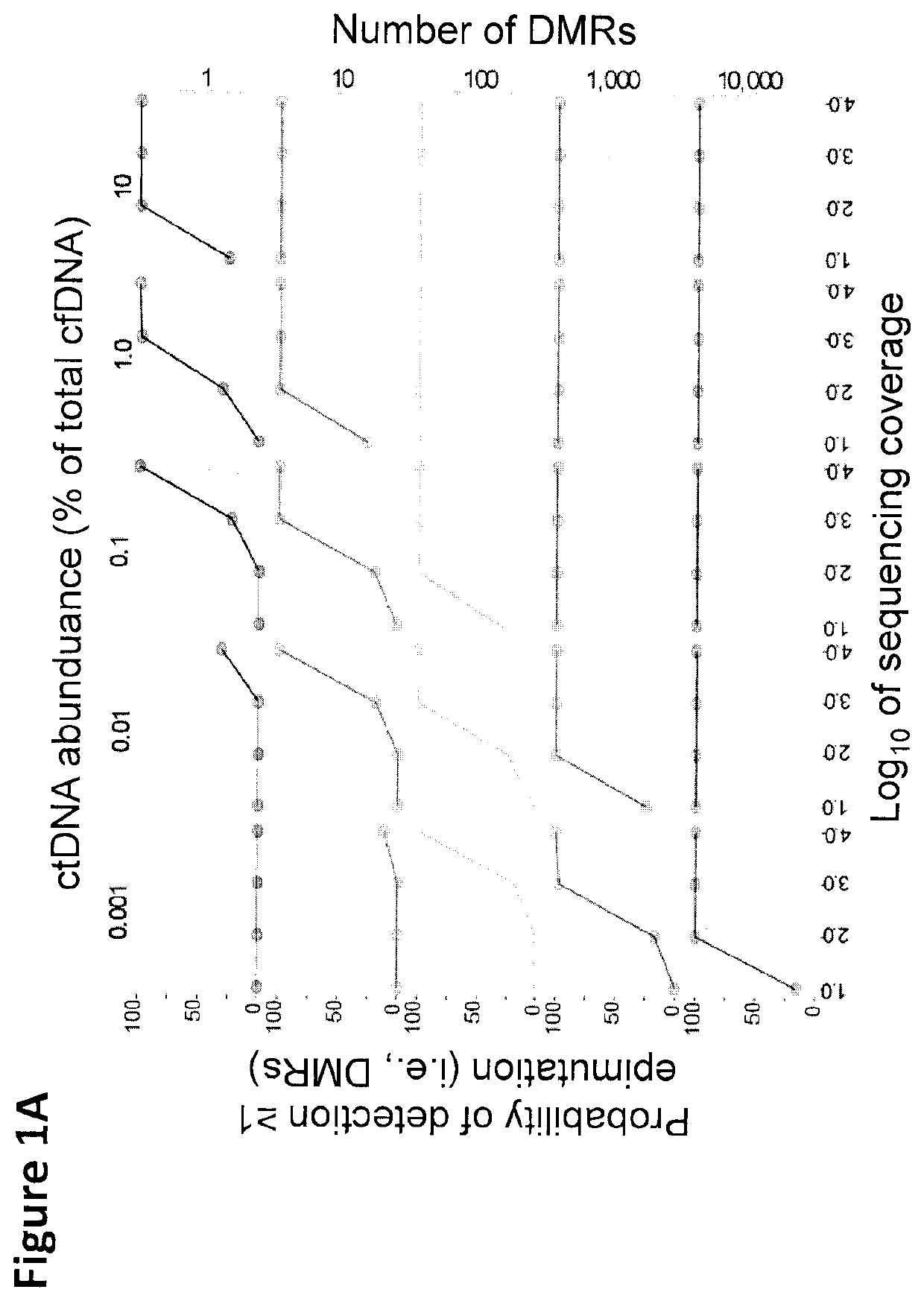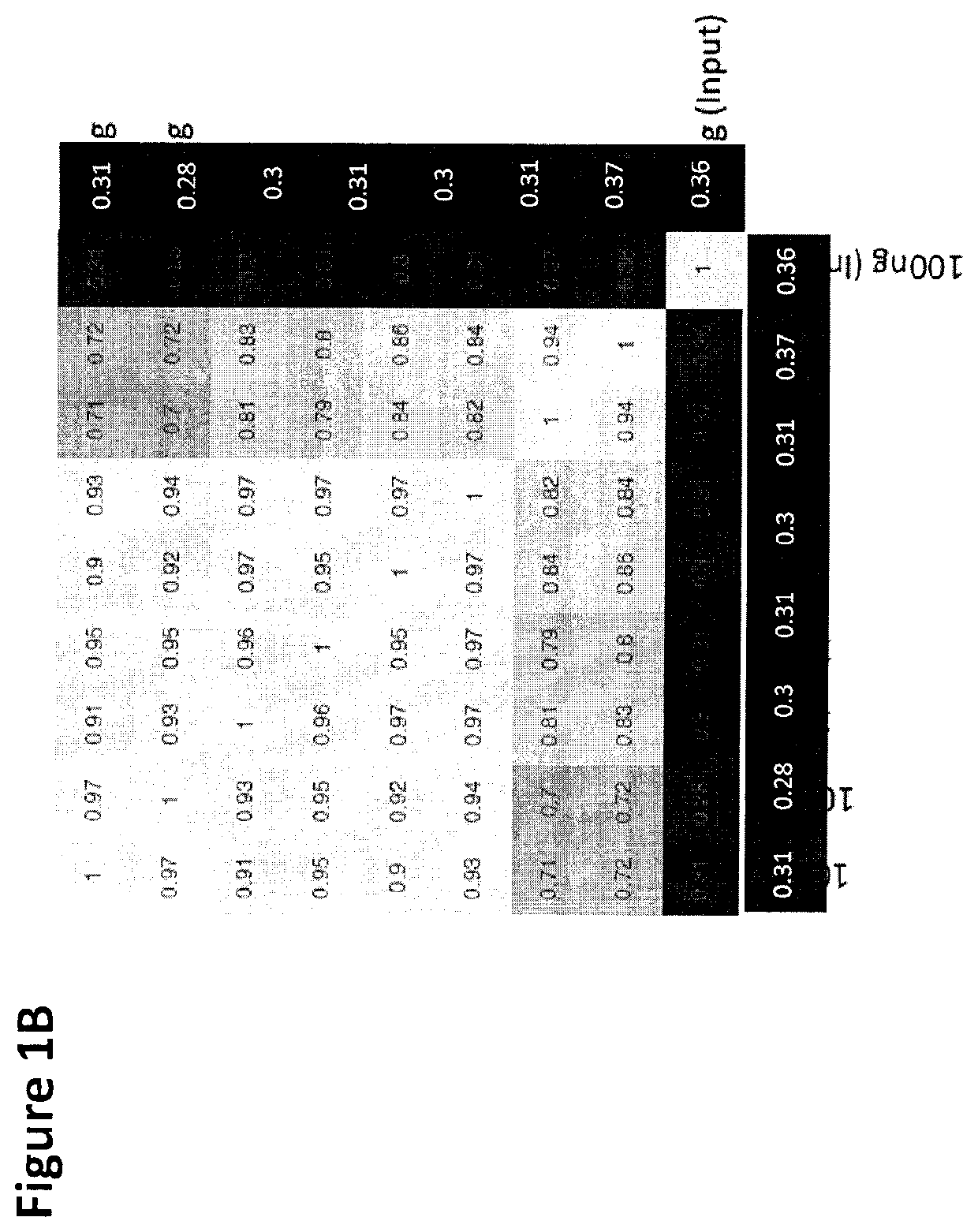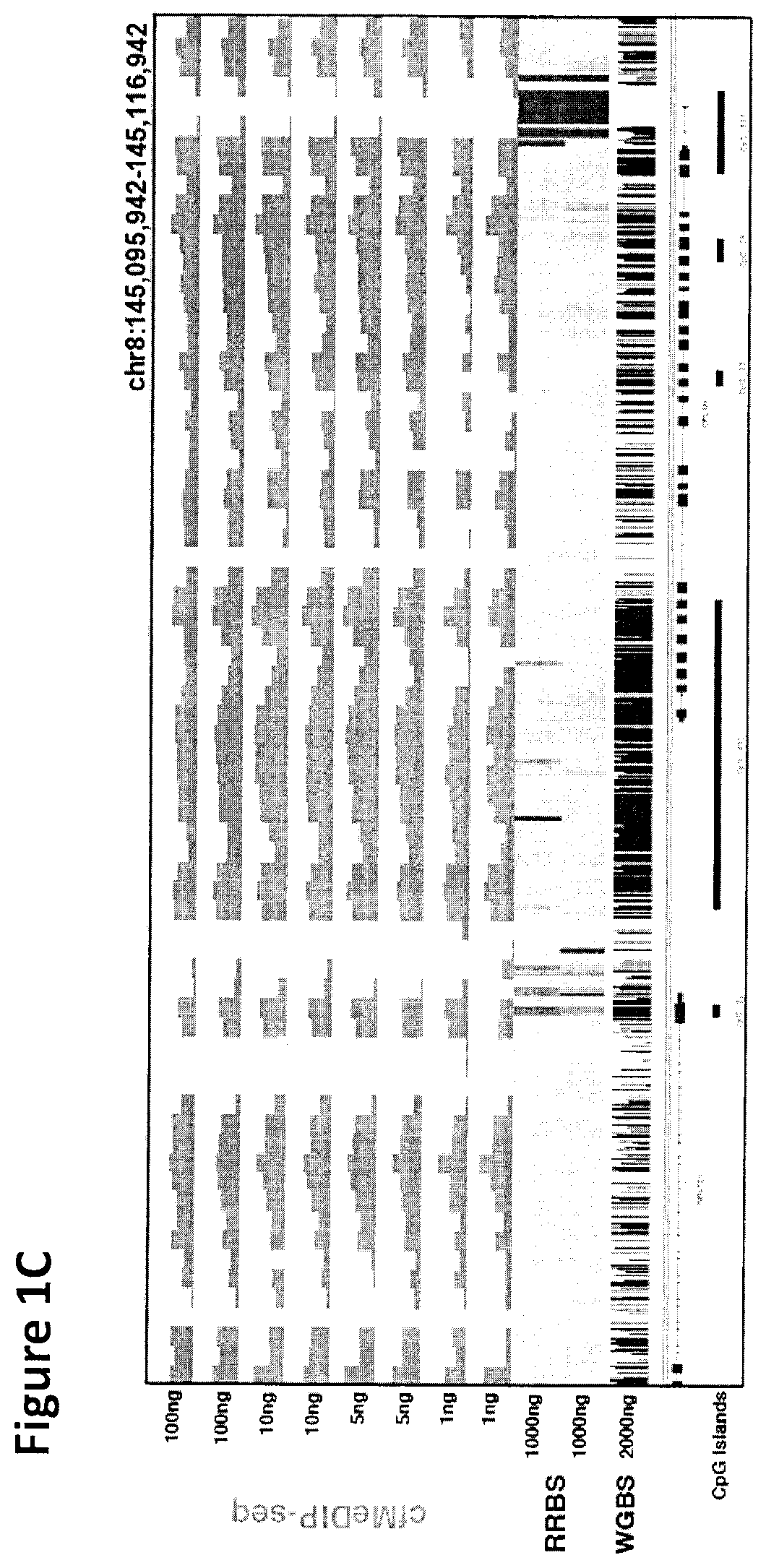Cancer detection, classification, prognostication, therapy prediction and therapy monitoring using methylome analysis
a technology of methylome and methylome, applied in the field of cancer detection and classification, can solve the problems of limited sensitivity and existing ctdna detection methods based on sequencing mutations
- Summary
- Abstract
- Description
- Claims
- Application Information
AI Technical Summary
Benefits of technology
Problems solved by technology
Method used
Image
Examples
example 1
Donor Recruitment and Sample Acquisition
[0108]CRC, Breast cancer, and GBM samples were obtained from the University Health Network BioBank; AML samples were obtained from the University Health Network Leukemia BioBank; Bladder and Renal cancer samples were obtained from the University Health Network Genitourinary (GU) BioBank, obtained from consenting urologic oncology patients, procured prior to nephrectomy and cystectomy respectively. Lastly, healthy controls were recruited through the Family Medicine Centre at Mount Sinai Hospital (MSH) in Toronto, Canada. All samples collected with patient consent, were obtained with institutional approval from the Research Ethics Board, from University Health Network and Mount Sinai Hospital in Toronto, Canada.
Specimen Processing—cfDNA
[0109]EDTA and ACD plasma samples were obtained from the BioBanks and from the Family Medicine Centre at Mount Sinai Hospital (MSH) in Toronto, Canada. All samples were either stored at −80° C. or in vapour phase ...
example 2
[0140]Using cfDNA Methylome Analysis as a Dynamic Biomarker of Response to Anti-Cancer Therapy
[0141]We tested the ability of cfMeDIP-seq to perform as a dynamic biomarker of therapeutic response in a cohort of head and neck cancer patients. Plasma was obtained from patients treated at University Health Network following informed consent. We performed cfMeDIP-seq, and DMRs were defined at baseline prior to treatment by comparison with a group of healthy controls. The number of DMRs detected at each time point during and after therapy was then quantified. Among 3 patients who underwent surgery, 2 patients displayed a drastic reduction in the number of detected DMRs following surgery (FIG. 14A,B), whereas 1 patient displayed an increase (FIG. 14C). Among 5 patients who underwent surgery followed by adjuvant treatment with radiotherapy (FIG. 14D-H), again most (4 of the 5) patients displayed a reduction in the number of detected DMRs during or following adjuvant treatment, and the 2 pat...
PUM
| Property | Measurement | Unit |
|---|---|---|
| Mass | aaaaa | aaaaa |
| Mass | aaaaa | aaaaa |
| Mass | aaaaa | aaaaa |
Abstract
Description
Claims
Application Information
 Login to View More
Login to View More - R&D
- Intellectual Property
- Life Sciences
- Materials
- Tech Scout
- Unparalleled Data Quality
- Higher Quality Content
- 60% Fewer Hallucinations
Browse by: Latest US Patents, China's latest patents, Technical Efficacy Thesaurus, Application Domain, Technology Topic, Popular Technical Reports.
© 2025 PatSnap. All rights reserved.Legal|Privacy policy|Modern Slavery Act Transparency Statement|Sitemap|About US| Contact US: help@patsnap.com



